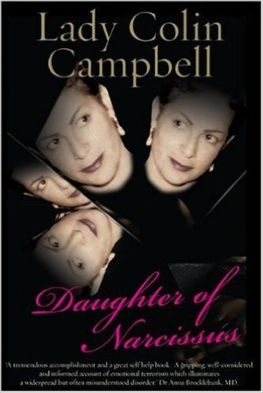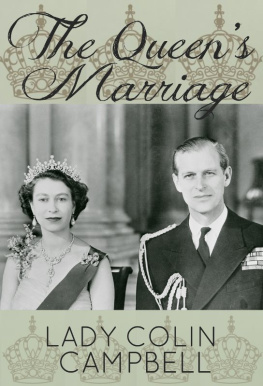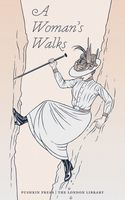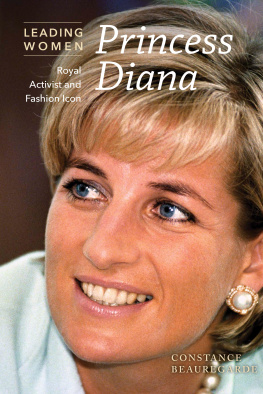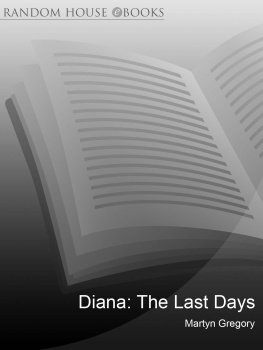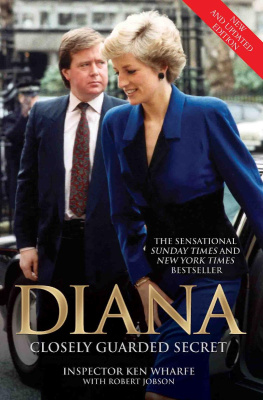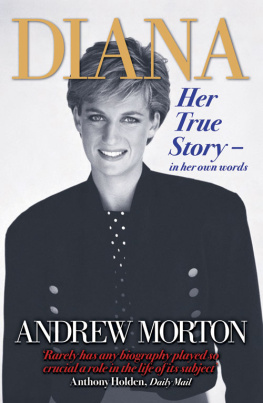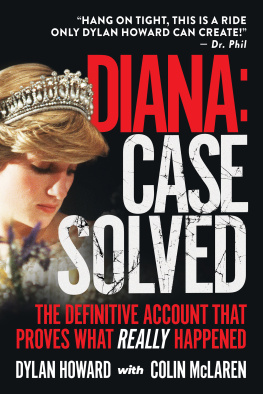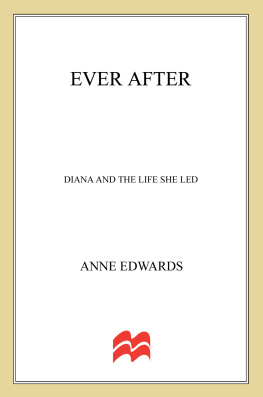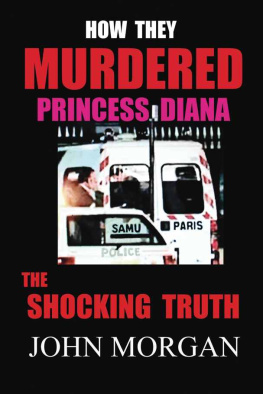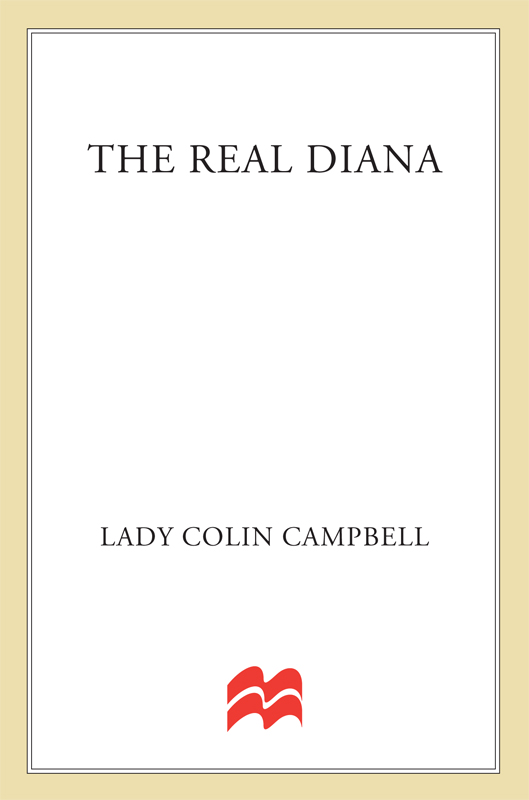
The author and publisher have provided this e-book to you for your personal use only. You may not make this e-book publicly available in any way. Copyright infringement is against the law. If you believe the copy of this e-book you are reading infringes on the authors copyright, please notify the publisher at: us.macmillanusa.com/piracy.
Contents
This book is dedicated to my sons,
Dima and Misha,
my mother, Gloria Smedmore Ziadie,
and to all those who appreciate
the value of sterling family life.
Acknowledgments
This book would not have been possible without the information which Diana, Princess of Wales, conveyed to me over the years. I would like to wish her posthumous thanks, to acknowledge how truly exceptional a personality she was, and to regret the circumstances which have allowed The Real Diana to come about.
Because of the subject matter of this book, thanking by name many of the other sources who have made it possible would be cursing them. Some are so eminent, others so well placed that to name them will be to ruin their lives. Although some people have been courageous enough to give me permission to name them, irrespective of the difficulties that would ensue, I have resolved not to put their mettle to the test, except as and where appropriate in the text. What I will do, however, is collectively thank them, and the many other people who helped with Diana in Private (1992) and The Royal Marriages (1993). Without their contributions neither The Real Diana nor the other two books could have been written, and I am truly grateful for their help and insights.
This book would not have been possible without the assistance and cooperation of my agent, Joni Evans, editor Hope Dellon, publisher Sally Richardson, and publicity director John Murphy, whom I wish to thank for their civility and support.
Last and by no means least, I wish to thank my two sons, Dima and Misha, for waiting on innumerable occasions with patience and understanding beyond their five years of age, until I was able to release myself from the demands the word processor made upon my, and as a result their, time.
Preface
Who was the real Diana? What was it about this woman that made her so fascinating to so many people? How is it that she became so popular that her death eclipsed the funeral of the contemporary worlds greatest saint, Mother Teresa?
Diana, Princess of Wales, was undoubtedly beloved by millions of people. Few of them, of course, had ever met her. Of those who had, even fewer knew her.
The real Diana, the Diana I knew and likedand sometimes didntwas a woman of contradictions. On the one hand, she was sweet and loving. On the other, by her own admission she could be bitter and vengeful. She was intelligent without being intellectual, wily and naive, vulnerable and tough. She was not shy, as she and several friends such as Sophie Kimball took pains to say over the years, yet she lived the whole of her adult life with people believingand reacting tothe press-imposed tag of shyness.
From the moment Diana burst upon the world stage in 1980, she possessed one of the most likable and sympathetic public images of all time. This image, while responsible for much of the adulation Diana received, became a trap. Diana herself tried to break out from its restrictive mold, to kill the fairy tale, as she put it to me in 1990 when trying to convince me to write the book which Andrew Morton subsequently produced.
The pre-fairy-tale Diana is worth recalling. I distinctly remember meeting her at a party when she was about seventeen. She was totally unmemorable, despite being tall and sweet. She did not yet possess the aura of beauty she later had in such measure. There were no indications of the sense of style she would subsequently develop, and which other teenagers with an interest in art or fashion have by that age. She was utterly traditional, a typical Sloane Ranger, and I would never have remembered her but for the fact that she was introduced to me as her unforgettable (and hated) stepmother Raine Spencers stepdaughter.
The butterfly who burst out of such a dull chrysalis in the early days of her marriage was more memorable. Once Diana became the Princess of Wales, our paths started crossing with greater regularity as she was launched upon the social and charity worlds. By then, of course, she was immensely famous, but she had not yet grown into the role of Princess of Wales in the way that she later did. Although no longer dull in style, she was still utterly traditional, with nothing individual about her. Moreover, there was an elusiveness to her personality, a not there quality that was both intriguing and disturbing.
Throughout the 1980s, I observed Diana growing into her public role with ever-increasing strength. Although I admired the way she conducted herself publicly, I cannot say I enjoyed every encounter with her. While I liked her, and thought her charming, I also sensed an underlying discomfort within herself which did not make one wish to prolong conversations with her. Only later, while we were working on Diana in Private together, did I discover that the feeling of discomfort was one which Diana carried around with her at all times. She did not live easily in her skin.
To my chagrin, considering the bitter regrets Diana later had about the Morton book, responsibility for planting the idea of a book in her head lies with me. Towards the end of the last decade, Britain was in the grips of a profound recession. I was desperately casting about for a means of raising funds for some of my charities when I hit upon the idea of writing an authorized biography of the Princess of Wales focusing on her charity work, with the proceeds to go to three of the charities we had in common. At first Diana was amenable, but by the time I went to Buckingham Palace in August 1990 for an appointment to discuss it with her Press Secretary, she had changed her mind. In a nutshell, she wanted me to write the book that Andrew Morton later published.
Had Diana told me that she wanted me to produce a panegyric, I would have turned her down cold. However, she did not. She led me to believe she wanted me to write the truth of my life, to quote her. The fairy tale is killing me, she said. If I dont escape from it, Ill die. I agreed to write what became Diana in Private on those conditions, thinking that I would have the liberty of producing a balanced account of her life. Only later, after contracts were signed and the book was well underway, did Diana and I appreciate that we had misunderstood one anothers positions. She did not want a truthful account of her life, but a heavily slanted version with which she could gain a separation from Prince Charles, whereas I told her, Im not about to trash your husband [when he doesnt deserve it].
Although this difference led to three years of non-speaks, to use the vernacular which Dianas circle employs, we did kiss and make up, literally and publicly, at a reception at the Russian Ambassadors residence in July 1995. Thereafter, we became what the English call chummy. We cleared up many of the misunderstandings which had arisen during the War of the Waleses, and grew to be on such cordial terms that I cried for hours on the day of her death.
Because so much of what I know about the Princess of Wales is not public knowledge, the Diana I knew and liked is a far more complicated, conflicted, intriguing and fascinating person than the wildly disparate saint or lunatic she is frequently portrayed to be. I hope that I have done her greater justice in the forthcoming pages than she often receives, and that I reconcile for the readers what onlookers have so far viewed as puzzling contradictions. I also hope that the picture I paint captures her essence as well as her spirit. Diana had both a great sense of fun and a great burden of pain. I hope I make intelligible for the reader what it was like to be so privileged yet so anguished, so beloved yet so self-loathing, so spoiled yet so deprived, so hopeful by nature and yet so often despairing. To the world, Diana, Princess of Wales, was a living myth, but to herself, she was just a human being trying to make some sense, and to gain some satisfaction, out of a life of extremes. It is the circumstances of that life, and the motives that drove her, which the succeeding pages will lay bare.



